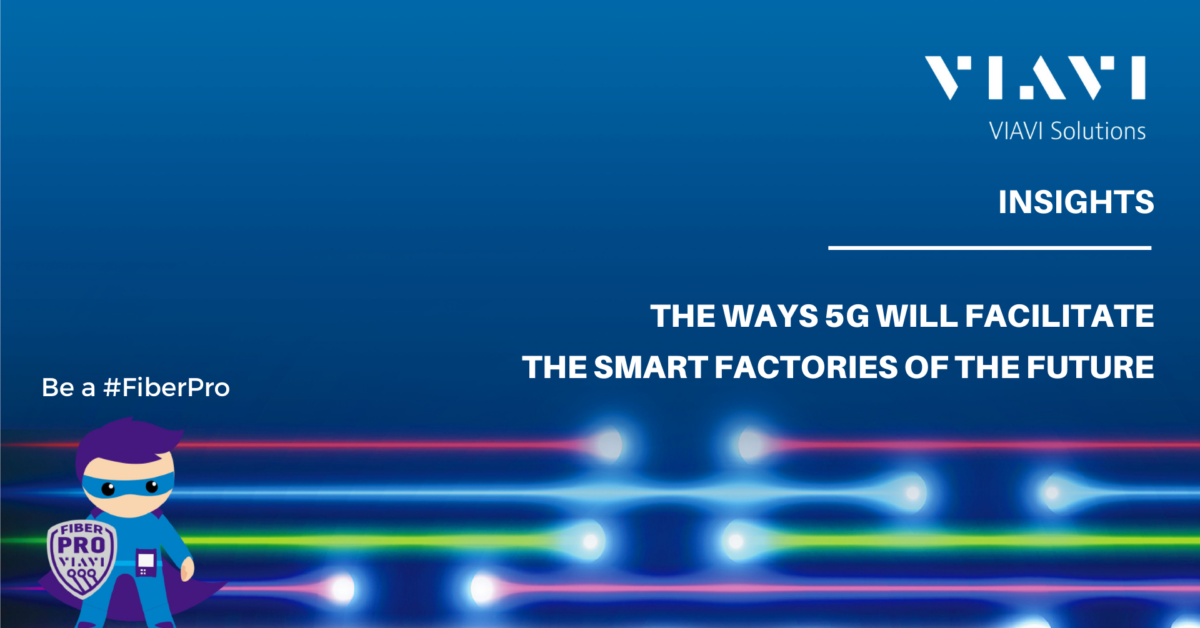The Ways 5G Will Facilitate the Smart Factories of the Future

The fourth industrial revolution, also called Industry 4.0, is blending computing power with machine and sensor technologies. As the fastest and most reliable connectivity enabler, 5G will deliver an array of innovative use cases to increase factory capabilities and boost agility, freeing operations from wire dependency.
5G is helping us speed toward a reality where we have more agile, fully connected, and automated manufacturing experience from design to distribution, with unprecedented levels of machine learning and AI. As such, 5G will become a game-changer. A wireless environment will also make processes smarter and less static.
Let’s have a look at the five ways 5G is expected to power the smart factory of the future.
Intelligent Collaboration
Tomorrow’s factory environments will see autonomous mobile robots (AMRs) operating on shop floors, fetching components, removing pieces of scrap, and freeing up workers for more important tasks by taking over less critical work. Meanwhile, 5G-enabled facilities will benefit from sensors placed throughout, monitoring production processes, and collecting data to feedback to machines and production managers. This will greatly enhance the speed of operations, improve maintenance capabilities and increase safety.
The possibilities for these connected devices are nearly endless. For example, it could help improve predictive maintenance and operational efficiency on the factory floor, as well as prevent theft and quality issues within logistics channels.
Robotics
5G will be the catalyst that will eventually help unleash the capabilities of robotics. Together with the utilization of edge computing capabilities, data will live closer to the source. This combined with the high speeds and large bandwidth of 5G will kick start the creation of smaller, cheaper, and untethered robots. 5G will eventually help these robots become more agile, making faster decisions and quickly adjusting to changes in near real-time.
Ultimately, we will see more types of smaller autonomous and collaborative robots on the factory floor performing a variety of tasks. These robots will not only help take the load off their human co-workers, but it will ultimately help factories optimize their production.
Flexible Networking
5G will help enable manufacturing companies to be more flexible and adjust the network based on their needs. With on-premise edge compute capabilities, they will be able to control sensitive data locally. In addition, separating a single physical 5G network into multiple virtual networks via network slicing will eventually become possible. For instance, a portion of the network in a manufacturing plant could be split off for operational equipment efficiency or when there’s an increase in market demand.
These capabilities coupled with network functions virtualization (NFV) and software-defined networking (SDN) will be among the key ingredients for manufacturers to optimize their network for ideal performance.
Augmented Reality and Virtual Reality
Manufacturing companies are already using augmented and virtual reality. But they haven’t fully invested in the technologies because of the large bandwidth it takes to run them. Employees also must be physically connected to the network to use the technologies.
With 5G, employees will be able to work with the technologies anywhere on the factory floor. They will be able to use it for activities like training, machine maintenance, data visualization, and designing. Better bandwidth will mean less probability that AR/VR connections are lost or that the technology will have to compete for connections. Imagine every employee having an AR headset that lets them adjust the production of a machine without touching it. Or visualize machine maintenance instructions on the fly.
Conclusion
The 5G smart factory of the future will center on a fully connected experience. From massive device connectivity and innovative technology experiences to near real-time automation and network flexibility, 5G will help bring major advancements to the smart factory. And manufacturing companies could ultimately realize major benefits such as performance improvements, operational efficiencies, and increased safety.
VIAVI Solutions has been an early driver in 5G adoption since 2013, and we continue to deliver innovative and cost-effective 5G testing tools to customers. VIAVI’s 5G test and verification solutions will deliver essential validation, verification and visibility for 5G. We can provide you with the opportunity to test, enable and assure your operations on 5G and optimize moving forward with essential experts in the industry.
Check out our comprehensive portfolio and learn what makes VIAVI stand out amongst other 5G testing companies.



